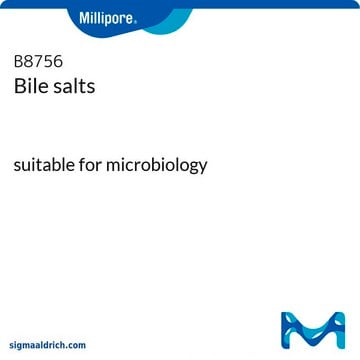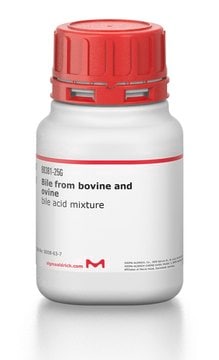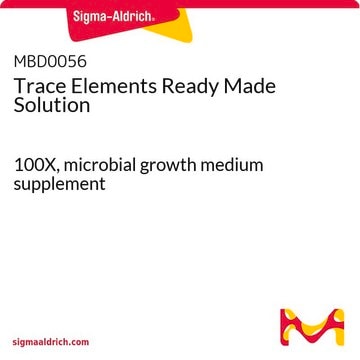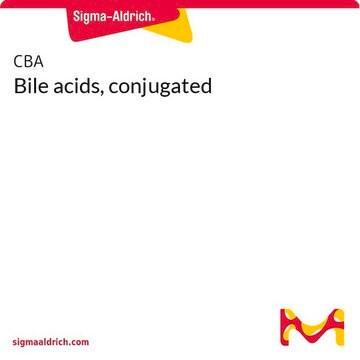70168
Ox-bile, dehydrated, purified
suitable for microbiology, extracted under controlled conditions from purified fresh bile
Sinonimo/i:
Bile acids sodium salt, cholic acid-deoxycholic acid sodium salt mixture
About This Item
Prodotti consigliati
Livello qualitativo
Sterilità
non-sterile
Forma fisica
powder
Impurezze
~5% sodium chloride
Residuo alla calcinazione
≤22% (as SO4)
Perdita
≤8% loss on drying
pH
6.0-9.2 (2% in H2O)
Solubilità
distilled water: freely soluble
applicazioni
microbiology
Categorie correlate
Descrizione generale
Applicazioni
Codice della classe di stoccaggio
11 - Combustible Solids
Classe di pericolosità dell'acqua (WGK)
WGK 3
Punto d’infiammabilità (°F)
Not applicable
Punto d’infiammabilità (°C)
Not applicable
Dispositivi di protezione individuale
Eyeshields, Gloves, type N95 (US)
Choose from one of the most recent versions:
Possiedi già questo prodotto?
I documenti relativi ai prodotti acquistati recentemente sono disponibili nell’Archivio dei documenti.
I clienti hanno visto anche
Articoli
Culture media provides a habitat with suitable nutrients, energy sources, and certain environmental conditions for the growth of microorganisms. The components of the culture media range from simple sugars to peptones, salts, antibiotics, and complex indicators.
Il team dei nostri ricercatori vanta grande esperienza in tutte le aree della ricerca quali Life Science, scienza dei materiali, sintesi chimica, cromatografia, discipline analitiche, ecc..
Contatta l'Assistenza Tecnica.